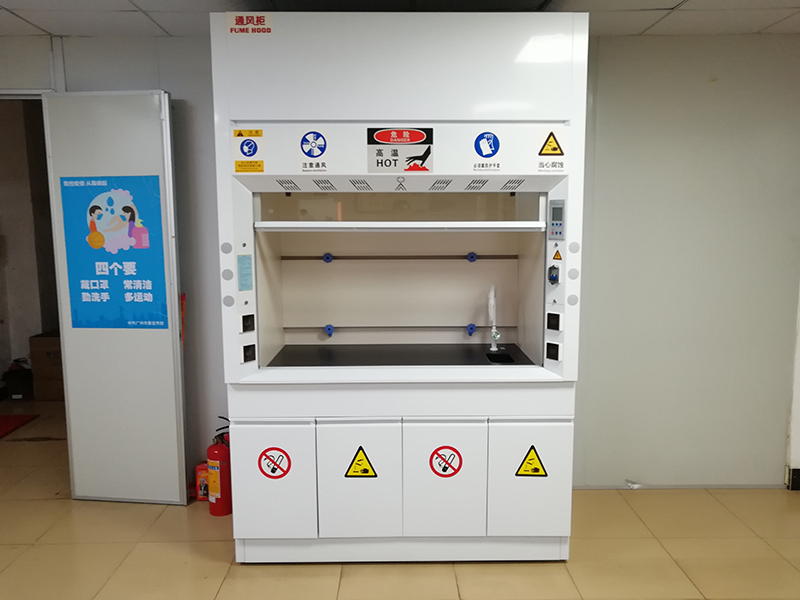Table of Contents
Avoid Storing Chemicals in the Fume Hood
Never store chemicals inside or beneath the fume hood, as it may compromise safety and ventilation efficiency.
Pre-Use Inspection
Before operating the fume hood, ensure that the ventilation system and all components are functioning properly.
Maintain a Safe Distance.
While using the fume hood, keep at least 15 cm away from the hood face. Avoid sudden movements inside or directly in front of the hood to maintain airflow. Minimize unnecessary movement in the lab to reduce turbulence.
Proper Storage of Items
Avoid placing objects in the fume hood that might obstruct the glass window or prevent it from closing completely. Items should not protrude beyond the cabinet.
Preventing Airflow Blockages
Do not block the exhaust or the openings beneath the deflector. If items must be stored inside the hood, place them on the sides and elevate them to allow air to flow underneath. Keep stored items away from contamination sources.
Regular Performance Checks
Regularly inspect the exhaust system to ensure proper ventilation. Avoid covering the air outlet with paper or lightweight objects that may disrupt airflow.
Proper Operating Position
During experiments, do not lean your head or upper body into the fume hood. Keep the glass window adjusted to elbow height to protect the chest and head. When not actively working, lower the window to 10-15 cm from the bottom to ensure safety.
Handle Malfunctions Immediately
If you notice any malfunction, halt all experiments immediately. Close the hood window and contact maintenance personnel for prompt repairs.
Post-Use Cleaning and Maintenance
After each use, thoroughly clean the work surface and equipment. Lower and close the glass window when finished. If the fume hood has been contaminated, hang clear warning signs and notify others to prevent accidental exposure or damage.




